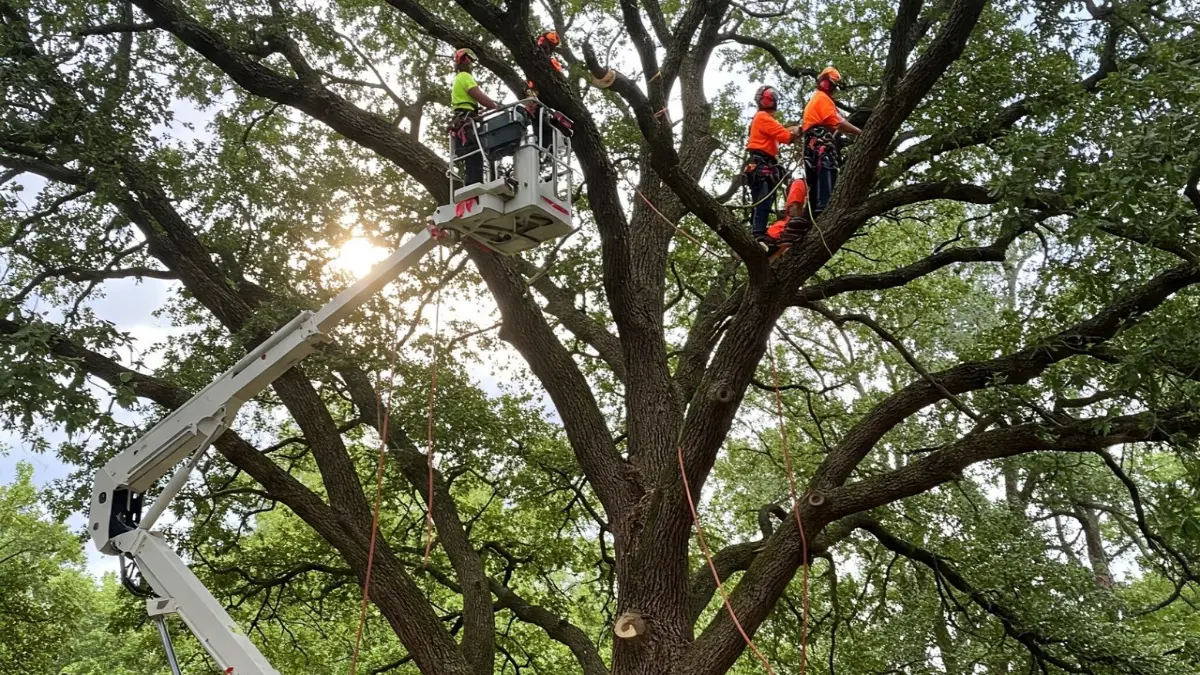Featured
Table of Contents
- – Big Stone Gap, VA Arborist Upgrade Costs
- – Big Stone Gap, VA Stump Removal Costs: What To...
- – Luxury Stump Removal Prices In Big Stone Gap,...
- – Big Stone Gap, VA Stump Grinding: Real Testim...
- – Budget-Friendly Tree Clearing In Big Stone Ga...
- – Big Stone Gap, VA Tree Service: Questions To ...
- – How To Avoid Overpaying For A Stump Removal I...
- – Custom Tree Service Costs In Big Stone Gap, VA
- – What Does It Cost To Book An Tree Clearing I...
- – Big Stone Gap, VA Arborist Pricing Trends
- – Best Tree Cutting Reviews In Big Stone Gap, VA
- – Big Stone Gap, VA Tree Clearing Rate Structure
- – Best-Reviewed Tree Cutting In Big Stone Gap,...
- – Big Stone Gap, VA Tree Trimming Service Pric...
- – Big Stone Gap, VA Tree Trimming: Payment Opt...

The subsections below supply more in-depth details about rates, consisting of an average variety for each. TypeAverage Elimination CostPineConiferPalmMagnoliaArborvitaeAshCedarSweet GumEucalyptusSycamoreCypressOakMaplePoplar You can anticipate to pay in between to remove a pine, depending on its size. Removing a pine is one of the more affordable tasks unless it is one that has been around for several years and is quite big.
Big Stone Gap, VA Arborist Upgrade Costs
Pines also have a tap root that grows deep into the soil, which can prove to be more challenging to remove. The process itself includes an expert cutting the tree, clearing the base, cutting the surface roots, getting rid of the stump, and lastly treating the soil. Without an expert hand, you risk leaving pine seedlings behind, which will fall from the roots of distressed pines.
Big Stone Gap, VA Stump Removal Costs: What To Expect
The U.S. nationwide average for conifer elimination is roughly to have the conifer lowered, carried away, and the stump ground or removed entirely. Conifers are usually much easier to remove, and despite the fact that they can grow rather tall, they do not cost a fortune to eliminate. Conifers include pine, spruce, fir, and juniper trees.
Luxury Stump Removal Prices In Big Stone Gap, VA
While conifers are gorgeous, they kill native plants and particular types of turf. This is since they require a great deal of water and nutrients to endure, so they leach it off surrounding plants. They also have an expansive network of roots, which can affect your home's foundation. The average price of palm elimination depends on the height as much as the type, varying from.
Big Stone Gap, VA Stump Grinding: Real Testimonials
That is why it is essential to understand which type you are getting rid of. While you do not need an herbicide to eliminate a palm tree, there are some actions your elimination professional will need to require to make sure the task is done properly. There are two methods they can get rid of them: by slicing them down or digging them up.
Budget-Friendly Tree Clearing In Big Stone Gap, VA
This is because little animals like rats and scorpions often reside in them. Plus, many types will have spikes, too. From there, they remove the actual tree and then the stump. Anticipate to pay between to remove this kind of tree, depending upon the exact size and information of the job.
Big Stone Gap, VA Tree Service: Questions To Ask
There are three types: green, white, and black ash. White ash is known for its lots of colors. With its gray-tinged bark, its leaves are green or purple in the spring and golden yellow or purplish-red in the fall. They take pleasure in moderate environments and great deals of sun. The green ash is named such due to its green or yellow foliage.
How To Avoid Overpaying For A Stump Removal In Big Stone Gap, VA

However, the bark is softer, and it flowers later on in the year. Due to the variation in height, the removal cost difference is wide from. A coniferous, evergreen tree, the cedar is a hardy species. True cedars delight in greater elevations, primarily in the Mountain ranges and the Mediterranean. A real cedar can grow as high as 160 feet in height and is often planted in the United States as a landscape option.
Custom Tree Service Costs In Big Stone Gap, VA
The growth of incorrect cedars differs from 50 feet up to 230 feet high. With star-shaped leaves and sensational fall colors, the sweet gum is considered a medium to big tree.
What Does It Cost To Book An Tree Clearing In Big Stone Gap, VA
Usually, it costs in between to eliminate a eucalyptus. Eucalyptus are not typical all over, however they are quite large compared to others, which is why even the smaller ones are so pricey to get rid of.
Big Stone Gap, VA Arborist Pricing Trends
There are a handful of ways to do this, consisting of burning, pulling, grinding, or killing them with herbicide. Expect to pay between to remove sycamores, based on the height, trunk size, and amount of work involved. Sycamores are among the largest hardwood trees, normally ranging from 60 to 100 feet high and as wide as 15 feet.
Best Tree Cutting Reviews In Big Stone Gap, VA
The first 2 actions will expose the insides of the tree and cut off the flow of nutrients up the trunk. From there, an expert applies herbicide to eliminate the tree and cuts down the trunk.
Big Stone Gap, VA Tree Clearing Rate Structure
There are various types of Cypress trees, however the most prevalent are the Leyland, Arizona, Bald, and Italian. The Bald Cypress grows in swampy or extremely moist areas while the others enjoy a dry, warm, or hot environment (stump grinding). They can grow as high as 80 to 100 feet high
Best-Reviewed Tree Cutting In Big Stone Gap, VA: Pricing

Prone to illness, the Cypress is one of the most prized woods for furnishings. The typical oak grows to around 60 feet, and depending on the complexity of the elimination, it costs an average of to eliminate. The specific size of your oak and the effort required to fell it impact what you will actually pay for elimination in addition to any additional services like stump grinding.
Big Stone Gap, VA Tree Trimming Service Price List
Access to the trees and the roots will likewise affect the general cost. Maples can quickly mature to 100 feet or more and usually expense between to eliminate from your residential or commercial property. The last price depends on the real height and complexity of the task. Maples are typically among the more expensive trees to get rid of due to the fact that of their size and the work associated with the removal.
Big Stone Gap, VA Tree Trimming: Payment Options
Poplars are giants of the species. Growing as high as 90 to 115 feet, these massive woods are primarily discovered in North America and include the aspen, cottonwood, and balsam trees. Boasting an expansive root system, poplars can be pricey to eliminate when totally grown. The procedure to remove trees involves all the trimming and cutting of the branches and trunk, bringing it down to a stump.
Table of Contents
- – Big Stone Gap, VA Arborist Upgrade Costs
- – Big Stone Gap, VA Stump Removal Costs: What To...
- – Luxury Stump Removal Prices In Big Stone Gap,...
- – Big Stone Gap, VA Stump Grinding: Real Testim...
- – Budget-Friendly Tree Clearing In Big Stone Ga...
- – Big Stone Gap, VA Tree Service: Questions To ...
- – How To Avoid Overpaying For A Stump Removal I...
- – Custom Tree Service Costs In Big Stone Gap, VA
- – What Does It Cost To Book An Tree Clearing I...
- – Big Stone Gap, VA Arborist Pricing Trends
- – Best Tree Cutting Reviews In Big Stone Gap, VA
- – Big Stone Gap, VA Tree Clearing Rate Structure
- – Best-Reviewed Tree Cutting In Big Stone Gap,...
- – Big Stone Gap, VA Tree Trimming Service Pric...
- – Big Stone Gap, VA Tree Trimming: Payment Opt...
Latest Posts
Request Tree Service Price Quotes In Mascoutah, IL
Top-Rated Stump Grinding In West Bend, WI: Pricing
Charlestown, IN Arborist Cost Guide
More
Latest Posts
Request Tree Service Price Quotes In Mascoutah, IL
Top-Rated Stump Grinding In West Bend, WI: Pricing
Charlestown, IN Arborist Cost Guide